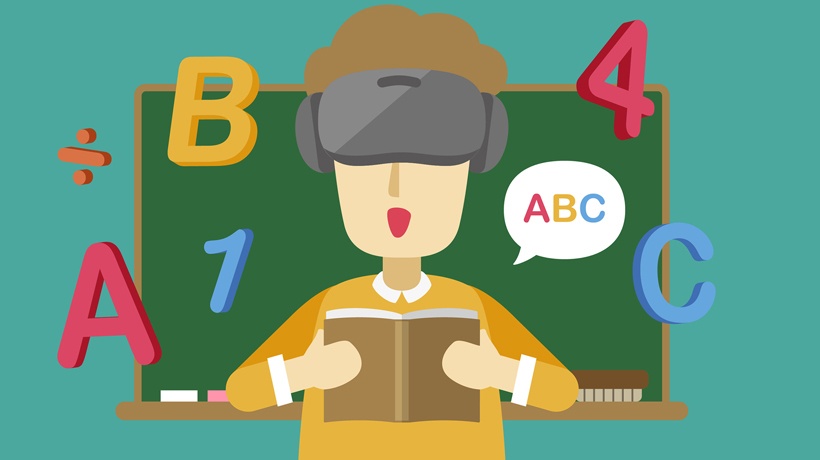Virtual Reality In The Classroom: Advantages And Disadvantages
Just a few years ago, virtual reality was a sci-fi concept for most of us. Soon enough, we witnessed the release of the first virtual reality headset, which showed us that almost everything’s possible. If a decade ago we were still using the home phone in order to communicate, nowadays we can instantly send messages through the use of smart devices. The virtual reality market is one of the fastest growing markets. If in 2014, the market’s value reached 90 million dollars, by 2018 (in just four years) it’s expected to grow to the impressive number of 5.2 billion dollars. According to some statistics, it is estimated that 171 million people will be using a virtual reality by 2018. Considering all these facts, we can definitely state that virtual reality could be useful to our day-by-day activities. Being a universal technology, it can be applied to almost any type of domain of activity. Of course, some fields could use VR more than others, and education is one of those fields. What about using virtual reality in the classroom?
As new generations are born and raised in a digital era where the technological advancements are quite advanced, they’ll obviously love technology and resist to the traditional learning ways. That’s why the virtual reality technology can bring a plus to the education of the new generations.
During today’s article, we’ll take a look at few of the advantages and disadvantages of using virtual reality in the classroom. It’s important to note that the advantages are more numerous, but we shouldn’t ignore the dis-empowering effects that VR could produce.
6 Advantages Of Using Virtual Reality In The Classroom
1. Provides Outstanding Visualizations That Aren’t Possible In The Traditional Classroom.
Virtual reality is great because it lets us explore different realities and alternate our experiences. By wearing a VR headset, you're encountering high-quality visualizations that can mark you in a positive way. Did you know that pictures can actually help us learn better? Well, check out this resource and find out more.
The traditional teaching methods can never reach such an effective way of emphasizing things through visualizations.
2. Creates Interest.
No matter what age they have, students will always love to sit and watch something instead of reading it. The VR technology is quite interesting, as it can create amazing experiences that could never be “lived” in the real life. Students will definitely feel more motivated to learn with the use of this technology.
3. Increases Students' Engagement.
Nowadays, teachers find it real hard to create a productive engagement within the class. With the virtual reality technology present in the education, this aspect will forever disappear, as most of the students will feel tempted to talk about their experiences within their virtual reality.
4. Doesn’t Feel Like Work.
Let’s face it; placing a headset on your head and watching stuff flash before your eyes, learning new information through videos and amazing visualizations, well… it doesn’t look like work. If we can make education fun, kids will love to learn more stuff and be more ambitious.
This is basically a general rule. When we enjoy doing something, we will do it with more interest, we’ll do it better, and we won’t feel like we’re doing something painful.
5. Improves The Quality Of Education In Different Fields.
Take medicine for example. In 2016, innovative doctors are taking advantage of the VR technology in order to explore new aspects of medicine and teach others better. Another example would be the content writing and editing field. Virtual reality can often help at find mistakes in content and provide awesome editing features.
6. Eliminates The Language Barrier.
The language barrier is often a big problem when it comes to education. If you want to study in a different country, you must understand and speak the language. With virtual reality, every possible language can be implemented within the software. Therefore, language will no longer represent a barrier for student’s education plans.

5 Disadvantages Of Using Virtual Reality In The Classroom
1. Deteriorates Human Connections.
While virtual reality can be a great asset for most of the existent fields of activity, it can also be a huge disadvantage. The traditional education is based on personal human communication and interpersonal connections. Virtual reality is quite different; it is you and the software, and nothing else.
This can damage the relationships between students and the overall human communication.
2. Lack Of Flexibility.
If in class you can be flexible, ask questions, receive answers, using a virtual reality headset is a different experience. If you’re using specific software which has been programmed to work exactly the same, you won’t be able to do anything else except what you’re supposed to do.
This lack of flexibility can be a disadvantage for most of the students, and that’s because education isn’t a fixed activity. It always fluctuates!
3. Functionality Issues.
Like with any programmed software, things can often go wrong. When things go wrong, you students’ learning activity is over until the tool is fixed. This can be quite expensive and also inconvenient.
So if a student has exams the next day and his virtual reality headset goes boom, he will be unable to study and pass that exam. This was just an example; it can happen differently any time.
4. Addiction To The Virtual World.
The possibility of students getting addicted to their virtual world is also big. We’ve seen what video games and strong experiences do to people. We can even take drugs as a good example; if what people experience is better than their normal existence, there’s quite a big chance of them becoming addicted.
5. Quite Expensive.
Advanced technology is often expensive. If we wish to expand this virtual reality trend and reach the masses, we have to spend billions of dollars on these features. More than that, the modern education that takes advantage of the virtual reality environment will only be accessed by the rich ones. The poor will not afford it; therefore, we will create inequality in education.
Conclusion
As you have probably noticed, the virtual reality environment is consistently evolving. It could bring dozens of benefits to almost any field, but it can also prove to be harmful. Per total, we believe that the modernization of education through the use of virtual reality can be quite a productive accomplishment.









